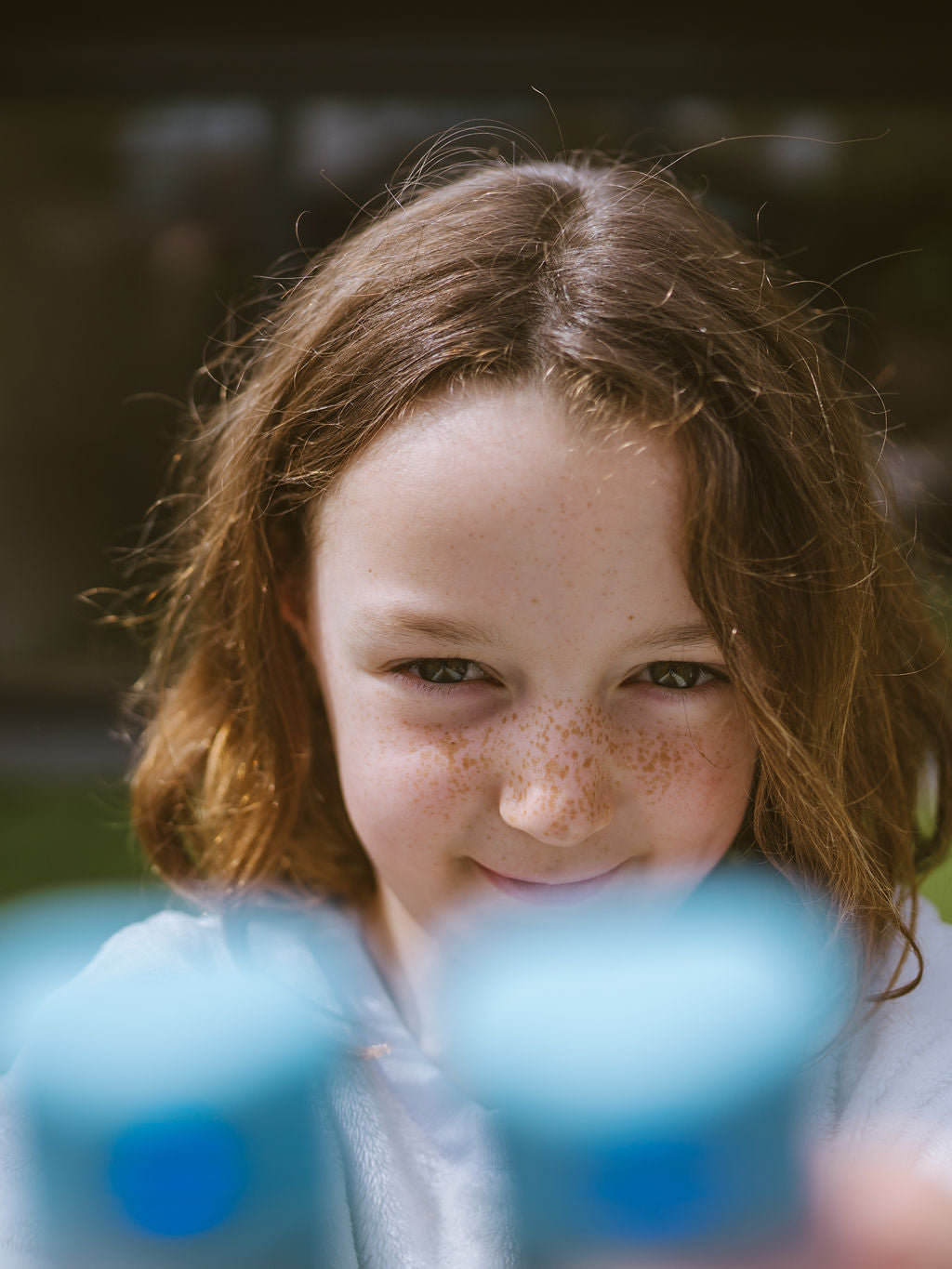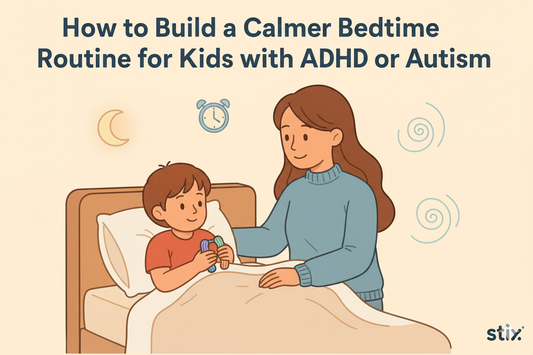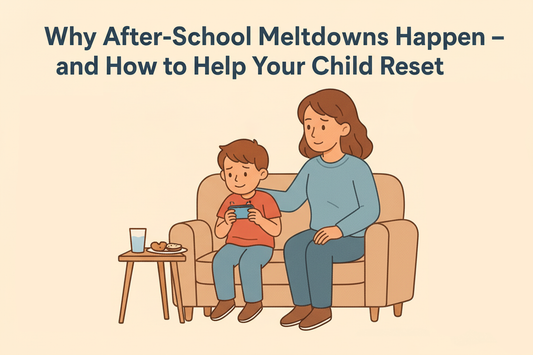ADHD Awareness Month: Supporting ADHD children with mindfulness

October is ADHD Awareness Month, and it’s a great time to spread awareness about Attention-Deficit/Hyperactivity Disorder (ADHD). This month, we’re working to break down the stigma around a condition that’s often misunderstood. ADHD affects millions of people globally, and by raising awareness, we can help those affected find support, embrace their uniqueness, and feel less isolated.
At Stix, we know firsthand how important it is to understand ADHD. There are around 694,000 children in the UK living with it—that's about 5% of the population. Many families, including ours, have faced the challenges of ADHD up close. So, as part of ADHD Awareness Month, we want to talk about how mindfulness can really make a difference for people with ADHD, especially kids.

First, let’s quickly bust some myths about ADHD…
-
Myth: “Children with ADHD can’t ever focus”. While children with ADHD often struggle with attention, they can also experience hyper focus on tasks that genuinely interest them.
-
Myth: “All children with ADHD are hyperactive”. Not all individuals with ADHD show hyperactivity. Some, particularly those with the inattentive type, may appear quiet or unfocused but still face difficulties with attention and focus. There are different types of ADHD, and some do not affect activity levels at all.
-
Myth: "ADHD is a result of bad parenting". ADHD is caused by brain differences, not poor parenting. When children fidget, act impulsively, or seem not to listen, these behaviours are symptoms of a medical condition, not indicators of a lack of discipline.
- Myth: "ADHD is a learning disability". While ADHD can affect learning, it is not classified as a learning disability. It impacts focus and attention, making school challenging, but it doesn’t directly cause difficulties in reading, writing, or math. However, learning disabilities often co-occur with ADHD, which can lead to confusion.
ADHD and the Stix story

Stix Mindfulness was inspired by a very personal story—our founder Liam's experience with ADHD in his own family. His brother Eoin struggled a lot with ADHD symptoms, both at home and in school. It was tough, and the family had to search for solutions that worked. They soon realised that greater awareness of ADHD could have better prepared them for these challenges.
Like many others in need of support, Eoin faced a two-year wait for help through CAMHS (Child and Adolescent Mental Health Services). Although medication was eventually part of his treatment plan, it came with its own difficulties. Eoin described feeling "grey" or "dull," prompting Liam to explore non-medical approaches to managing ADHD in children.
Liam researched the effects of diet, exercise, and lifestyle changes in relation to ADHD behaviours, but became particularly fascinated by mindfulness. He recognised the powerful impact mindfulness practices could have on children with ADHD and wondered why such skills aren’t taught from an early age.
This realisation sparked the idea behind Stix Mindfulness—Liam’s mission to empower children with ADHD by providing them with mindfulness tools to help manage their symptoms without solely relying on medication and CAMHS services, and being able to provide children with support whilst they are on long waiting lists. His family’s experiences motivated him to make these practices accessible to more families facing similar challenges.
How does Mindfulness help children with ADHD?
Mindfulness can be a game-changer for children with ADHD. It encourages being present, slowing down, and avoiding distractions. Since ADHD often leads to hyperactivity and impulsiveness, mindfulness can introduce focus and calm. Simple practices like breathing exercises and body awareness train the brain to stay on track. The Stix Mindfulness Remotes make mindfulness engaging and fun for younger children with ADHD, helping them manage stress and remain grounded.

Mindfulness doesn’t require big changes either—it can be practiced anytime, anywhere. Just a few minutes a day with the Stix Remotes, whether at school or home, can help manage ADHD symptoms such as inattention and impulsivity. Over time, mindfulness boosts emotional resilience and improves planning and decision-making skills.
Here are some common challenges children with ADHD face, and how mindfulness can help:
FOCUS
Children with ADHD can struggle to stay focused on a boring task they have no interest in for more than a few minutes. They might daydream, look out the window or focus on irrelevant stimuli. A less active prefrontal cortex decreases their ability to screen out distractions like noise or their own thoughts and feelings.
Mindfulness practices can enhance concentration and extend attention spans over time, enabling children to remain engaged in tasks and activities. This benefit is particularly important in school settings.
How the Stix Remotes help Focus:
The Stix Remotes aid in improving focus by incorporating breathing techniques, teaching children how to manage impulses and distractions effectively.
Currently, they are being utilised in schools to help children with ADHD maintain focus in the afternoons when their medication's effects start to fade. Teachers noticed that one child, Ben, who couldn’t sit through a two-minute read along, after a few months of mindfulness, is now engaged and focussed during storytime.
EMOTIONS
ADHD impairs executive functioning in a smaller prefrontal cortex, meaning it also affects the management of emotions, with intense emotional reactivity arguably its most disruptive symptom in children.
Engaging in mindfulness helps children manage their emotions more effectively, reducing impulsive reactions. By fostering a sense of calm, they are better equipped to respond thoughtfully to challenging situations rather than acting on impulse.
How the Stix Remotes help with emotions:
One example of how Stix activities teach emotional regulation is through a unique activity called 'Surfing' where children balance on an imaginary surfboard while using the remotes. The activity encourages them to connect with their emotions, observing them as they ride into shore.

SLEEP
It is estimated that up to 70% of children with ADHD have some form of sleep disruption. Many ADHD children can struggle to get to sleep at night, due to anxiety, insomnia amongst other issues. This can also have an impact on the parents, suffering from stress because of their child’s sleep issues.
A child with ADHD needs a calm and structured bedtime routine. Starting 30 to 60 minutes before bed they should start to get ready to sleep and start to relax. This is a perfect time to incorporate mindfulness into children’s lives, creating the mental space needed for sleep. Meditation will calm racing thoughts, lower heart rates and slow breathing - all very helpful to address sleep disturbances.
How the Stix Remotes help with sleep:
Abby struggled with anxiety before bed, which really affected her sleep. Her parents introduced her to Stix and they quickly added a 15 minute (3 activities) into their evening routine. This helped them to move away from TV time before bed. She told us that it helped ‘clear her mind’ and ‘get tired’. Her parents say that she often lies in bed without the remotes using Belly breathing techniques Stix have taught her.

SELF IMAGE
The criticisms, punishments and frustrations that come from ADHD can affect how children see themselves and continue into adulthood. People with ADHD are often called spacey, over sensitive or a troublemaker. This can lead to feelings of deficiency and mistrust in yourself from an early age.
Mindfulness can help with these feelings in children by addressing these feelings and understanding their ADHD symptoms. Increased self-awareness empowers children to recognize their ADHD symptoms as they arise, reducing self-blame.
How the Stix Remotes help with Self Image:
The Stix activity, Bubble popping, encourages children to recognise their feelings and emotions. The bubbles help to illustrate thoughts that come and go. 'Thought-Bubbles' can cloud your vision and make you feel sad, but fortunately you can pop 'thought bubbles' with your Stix!

ANXIETY
Children with ADHD are more likely to have anxiety disorders than children without ADHD. Research suggests that between 25-33% of children with ADHD have a co-existing anxiety disorder. This can create a vicious cycle, as anxiety can worsen other ADHD symptoms, like restlessness and lack of patience.
Mindfulness has been shown to significantly decrease anxiety and stress. Techniques such as deep breathing and focused attention foster a sense of tranquillity, helping individuals navigate daily pressures more effectively. Stix Remotes can be especially helpful in this process, as they make practicing mindfulness more engaging for children.
By turning mindfulness into an interactive and playful experience, children can learn how to calm their minds and bodies, reducing feelings of overwhelm. Over time, these practices can help break the cycle of anxiety and ADHD symptoms, offering children tools to manage both conditions more effectively.

At Stix, we are committed to empowering children with the tools they need to navigate their unique challenges. Our mindfulness remotes have already begun making a difference in schools and households across the UK that support ADHD children, and we invite others to explore this opportunity. For schools that support children with ADHD, we offer free trials of our Stix mindfulness program. If you’re interested in discovering how mindfulness can transform the experience of children with ADHD in your school or home, don’t hesitate to reach out to us athello@stixmindfulness.co.uk.



